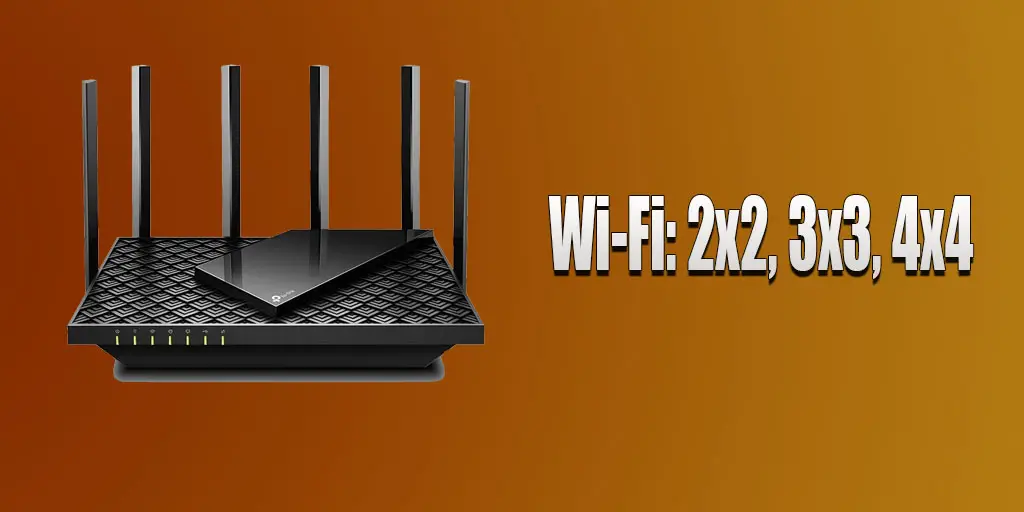The terms Wi-Fi 2×2 and 4×4 emerged after 2009, with the introduction of the fourth-generation Wi-Fi standard and the implementation of MIMO (Multiple Input Multiple Output) technology. In simple terms, MIMO uses multiple antennas to boost bandwidth. By separating the antennas in space or changing the signal’s polarization, more data can be transmitted, significantly increasing speeds.
For example, Wi-Fi 4 can achieve speeds of up to 600 Mbps using four antennas, while Wi-Fi 5 can reach an impressive 6.77 Gbps with 8x MU-MIMO antennas. The more antennas, the greater the transmission rate and overall network performance.
Interpretation 2×2, 3×3, 4×4
That is where the designation 2×2, 3×3 or 4×4 came from. And it was already a play on words, such designation was interpreted as anyone wanted, but basically this designation can be explained as follows
Wi-Fi 2×2: two times two meant that the router supports 4 antennas.
Wi-Fi 3×3: a rather rare designation, usually it was explained by the fact that the router has six antennas 1+1 (two antennas of 2.4 GHz standard) and 2×2 (four antennas of 5 GHz band).
Wi-Fi 4×4: the router has eight antennas, a designation sometimes used in the Wi-Fi 5 standard.
The general rule is that 1×1 means two antennas (1 and another).
This designation has gradually fallen out of use. The reason is that if a Wi-Fi 5 module supports MiMO technology, it is not physically necessary to have separate physical antennas; the antennas can be segmented or embedded. For example, a TV or laptop does not have five physical antennas, but they support MIMO technology.
So, this designation was used for marketing purposes rather than really revealing the device’s specifications.
An alternative way to interpret Wi-Fi configurations such as 1×1 , 2×2 and 4×4
An alternative way to interpret Wi-Fi configurations such as 1×1 , 2×2 and 4×4
The first digit indicates the number of transmitting antennas. The second digit indicates the number of receiving antennas.
1×1 configuration: In this combination, there are two antennas: one for transmitting and one for receiving. This is the basic configuration without MIMO technology .
2×2 configuration: Here two antennas handle transmission and two antennas handle reception, MIMO technology is used . Essentially, there are two transmit paths and two receive paths, effectively doubling the transmit speed compared to a 1×1 configuration.
4×4 configuration: This advanced configuration has four antennas for both transmit and receive, further increasing the speed over the base configuration.






